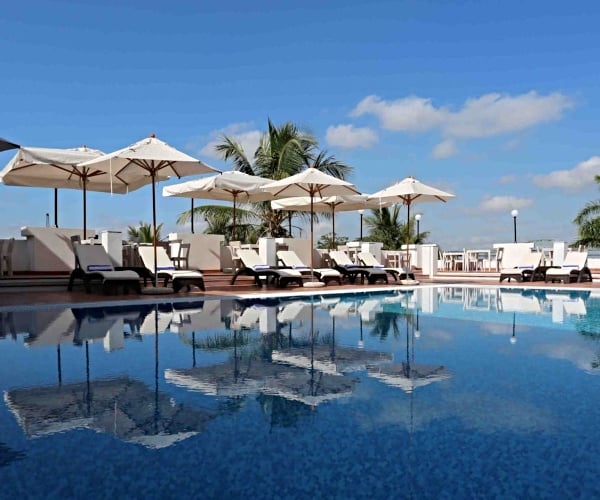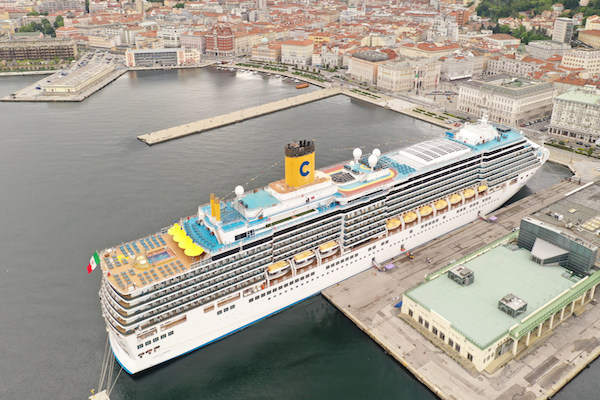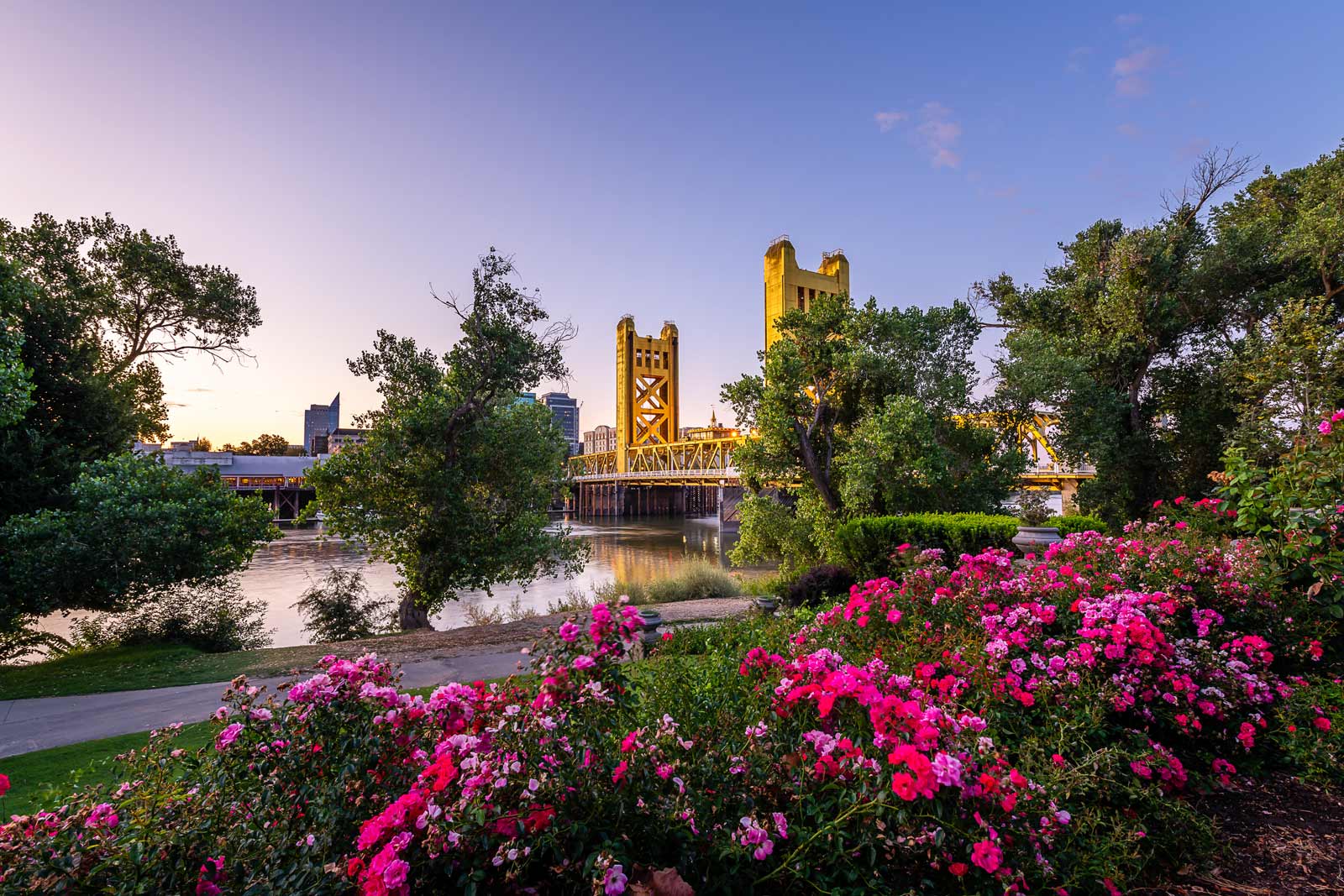Spice up your life - Zanzibar
Situated off the coast of Tanzania and washed by the warm, clear waters of the Indian Ocean, Zanzibar is a tropical archipelago comprised of several scattered islands, the largest two being Unguja (Zanzibar Island) and Pemba. The post Spice...

Situated off the coast of Tanzania and washed by the warm, clear waters of the Indian Ocean, Zanzibar is a tropical archipelago comprised of several scattered islands, the largest two being Unguja (Zanzibar Island) and Pemba. Despite its sinister slave trading past, the name Zanzibar nowadays conjures up images of spice markets, palm-fringed beaches and white-sailed dhows on a turquoise sea, all kissed by the spice-laden East African trade winds – and happily the reality doesn’t disappoint.

Our holiday actually started before we’d even reached the island. After a long day’s travel and some delayed flights, we reached Dar es Salaam, once a fishing village, that has grown to be Tanzania’s largest city, its financial hub and commercial port on the Indian Ocean. Despite its name, which means ‘abode of peace’ in Arabic, Dar es Salaam is a large and hectic city. The drive from the airport was slightly hair-raising, our driver had us on the edge of our seats with his erratic lane changing manoeuvres, but when we pulled up with a screech of tyres at the door of The Slipway Hotel our holiday really began. A late dinner of seafood, wood-fired pizzas and huge sharing platters, on the promenade, right by the sea was the perfect start.

Overlooking the Indian Ocean, on the exclusive Msasini Peninsula just to the north of Dar’s city centre, The Slipway started life as a boatyard, but is now much more than just a hotel. Set within an attractive seaside complex, the restaurants, cafés and cocktail bars are buzzing at weekends and its souk and galleries are ideal for last-minute souvenir shopping. And with the palm trees swaying in the breeze, fishermen wandering up and down the beach and that distinctive salty seaside tang in the air, you’d be forgiven for thinking you’re not even in a city at all. This hidden gem is an excellent option for a city stopover and its relaxed vibe attracts well-heeled locals and expats as well as tourists.

Leaving Dar es Salaam behind we headed for the laid back paradise of Zanzibar. The island’s history has been shaped by hundreds of years of trade in spices – cloves, nutmeg, cinnamon, saffron, vanilla and more – with merchants sailing here by ship from as far away as Europe, the Middle East and even China.

No visit to Zanzibar is complete without some time spent in Stone Town. Discover its treasures – mosques and colourful back street markets, winding lanes and cobbled streets, flavoursome foods and friendly people. Explore the maze of streets – from the ancient slave market to the fairy tale Sultan’s Palace, the House of Wonders, and The Old Dispensary, there is much history to absorb. Shop for clothes, fabrics, artworks in the narrow alleyways, and oriental spices in Darajani Market, or watch the local fishermen hauling in their catch.

Take an early morning walk through Stone Town’s narrow, white-washed alleys, past ornate wooden doors. Just before sunset, at the corner of the night market, boys compete with each other on crazy free dives off the edge of the wall and into the bay. At sunset, at Forodhani Gardens on the waterfront, a night market pops up, where you can watch cooks grilling meat, octopus tentacles, lobsters, crayfish, squid, and more. Sugarcane juice stands squeeze in between Zanzibari Pizza vendors.

Later in the evening, find your way to one of the rooftop restaurants in the heart of Stone Town, like the Emerson on Hurumzi, once the home of Tharia Topan, one of the richest men in the Swahili Empire and a venerable grande dame of restored palaces. Dinner here at the Tea House Restaurant, with its rooftop vantage point and 360⁰ views of Stone Town is a treat. Dinner is a three course set menu celebrating Zanzibari cuisine, combining the flavours of Swahili, Persian and Omani influences, and accompanied by traditional taarab music and singing by musicians from the Dhow Countries Music Academy. The exotic hotel also makes a perfect place to stay in Stone Town with its elegant antique furnishings and unique style.


IMPORTANT NOTICE:
If you are reading this article anywhere other than on A Luxury Travel Blog, then the chances are that this content has been stolen without permission.
Please make a note of the web address above and contact A Luxury Travel Blog to advise them of this issue.
Thank you for your help in combatting content theft.

Another stylish, classic place to stay in Stone Town if the fabulous Zanzibar Coffee House, which offers a touch of magic and romance in an authentic Arabic house deep in the heart of Stone Town. This is one of the oldest buildings in Zanzibar, constructed in 1885, and much of its original architectural detailing and has been carefully renovated – the end result is a higgledy-piggledy layout, over several floors, that’s full of character. The photogenic top floor, with its wraparound views of Stone Town’s rooftops, is a major drawcard – at breakfast grab a table on the balcony between the flowering plants, or inside, with arched doorways on every façade thrown open to the breeze. The view is wonderful, and like most Stone Town hotels you’ll likely have been woken early by the haunting call to prayer from a nearby mosque.


All the major Stone Town sites are walking distance of the Coffee House, and the ground floor of the hotel is a café that serves a simple snack-style menu of soups, salads, sandwiches, wraps and excellent freshly baked pastries and tarts, all washed down with delicious Tanzanian coffee, harvested from their sister farm Utengule, roasted on site, and expertly brewed. The café is hugely popular with visitors from all over Stone Town.
Heading north, an hour’s drive from Stone Town, we reach the beaches of Nungwi. There’s a leisurely atmosphere here, as you get your toes in the sand and wander down the beach to the lighthouse or watch the local ladies foraging for shellfish in the shallows. In the evenings, Nungwi harbour is filled with dozens of fishing dhows with billowy ivory sails, heading out through the cobalt blue waters towards the setting sun, for a night of fishing at sea.

We were staying at the fantastically located Nungwi Dreams. The Indian Ocean here is gorgeous, the white sand shore is fringed with turquoise that turns to emerald and inky blue where the water deepens. Sunrise on the beach was sensational, watching the sky turn from grey to shades of pale pink, then orange, as the sun rose above the horizon.


A roof top ‘sky bar’ for colourful sundowner cocktails and dinners accompanied by lively local musicians were memorable. With 56 rooms and 1 family villa, Nungwi Dreams it is definitely a ‘resort style’ hotel, and has all the comforts you’d expect from a luxury resort, while still being small enough to be friendly and personal. Our rooms were modern, sleek and bright, with lovely views out over the ocean, and with two swimming pools to swim in, plus the beautiful warm ocean, we were spoilt for choice. This is the quintessential Zanzibar beach holiday destination, the ideal place for your dream escape.

With its pearly-white beaches, palm trees and mysterious Arabian flair, the island captures the imagination, and lying close to the equator, Zanzibar and sunny days go hand in hand – what more could you ask for?

Did You Know This About Zanzibar…
The people of Zanzibar are known as Zanzibaris and their native language is Kiswahili, commonly known internationally as Swahili. Popularly known as the ‘spice islands’, Zanzibar was once the world’s largest producer of cloves, and its history was heavily influenced by this activity. Zanzibar is located about 30Km off the coast of mainland Tanzania in the Indian Ocean. Zanzibar is actually an archipelago with the two main Islands of Zanzibar (also known as Unguja, the larger one) and Pemba (the smaller of the two). Zanzibar was incorporated into the United Republic of Tanzania in 1964. Zanzibar, has its own democratically elected president and government that run the internal affairs of the Islands. Zanzibar’s Stone Town has 50 mosques, 20 churches and 4 Hindu temples. The House of Wonders is one of the first buildings in East Africa to have electricity and elevator, and is Stone Town’s oldest existing building. Zanzibar’s oldest remaining building is the 11th century mosque at Kizimkazi. The name Swahili comes from the Arab word sawahil which means ‘coast’. The rare Kirk’s Red Colobus monkey is only found in Zanzibar, predominantly in Jozani Forest. The Shortest War in History was fought in Zanzibar in 1896. On 25 August, Sultan Hamid bin Thuwaini died, and two hours later, an usurper broke into the Palace and declared himself ruler. In a show of Victorian Gunboat Diplomacy, the Royal Navy was asked to evict him. At precisely 9 o’ clock on the 27th, three warships opened fire and in 45 minutes reduced the Palace to rubble, and deposed the usurper. The bombardment has since been called the “Shortest War in History” as verified by the Guinness Book of Records.
 KickT
KickT 





























